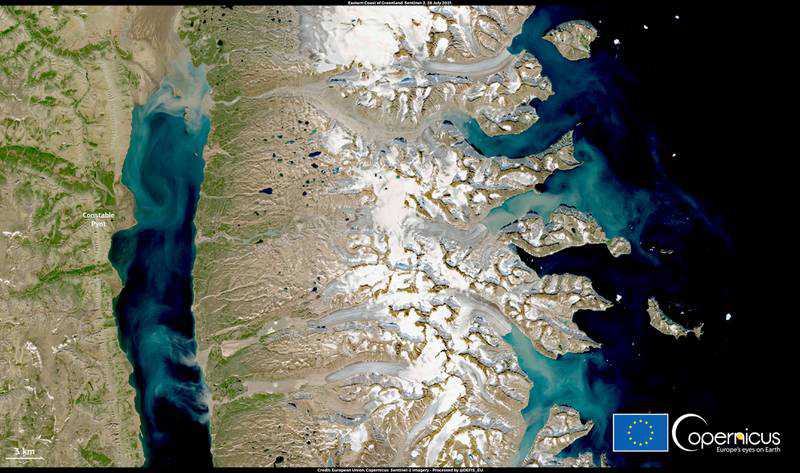Arctic heatwave melts enough ice to cover Florida in 5cm of water, scientists say
01 August, 2021

Greenland's ice sheet has experienced a “massive melting event” that would have been enough to cover the US state of Florida in 5cm of water, researchers have found.
The area has seen record high temperature this week, and since Wednesday, in the Arctic heatwave, the ice sheet has melted by around eight billion tonnes a day, Danish researchers said.
That is twice its normal average rate during summer, the Polar Portal website reported.
“It’s a very high level of melting and it will probably change the face of Greenland, because it will be a very strong driver for an acceleration of future melting, and therefore sea-level rise,” said Marco Tedesco, a glacier expert at New York’s Columbia University.
“We had these sort of atmospheric events in the past but they are now getting longer and more frequent,” he added.
“The snow is like a protective blanket so once that’s gone you get locked into faster and faster melting, so who knows what will happen with the melting now. It’s amazing to see how vulnerable these huge, giant areas of ice are. I’m astonished at how powerful the forces acting on them are.”
The Danish Meteorological Institute reported temperatures of more than 20°C, above twice the normal average summer temperature, in northern Greenland.
At Nerlerit Inaat airport in the north-east of the territory, there was a record 23.4°C degrees on Thursday.
With the heatwave affecting most of Greenland that day, the Polar Portal website reported a “massive melting event” involving enough water “to cover Florida with two inches of water".
The largest melt of the Greenland ice sheet still dates back to the summer of 2019.
But the area where the melting took place this time is larger than two years ago, the website added.
The Greenland ice sheet is the second largest mass of freshwater ice on the planet with nearly 1.8 million square kilometres (695,000 square miles), second only to Antarctica.
The melting of the ice sheets started in 1990 and has accelerated since 2000.
The mass loss in recent years is approximately four times greater than it was before 2000, say the researchers at Polar Portal.
The Greenland ice sheet, if completely melted, would raise the ocean levels by six to seven metres.
But with a relatively cool start to the Greenland summer, with snowfall and rain, the retreat of the ice sheet so far for 2021 remains within the historical norm, according to Polar Portal. The melting period extends from June to early September.
Source: www.thenationalnews.com
